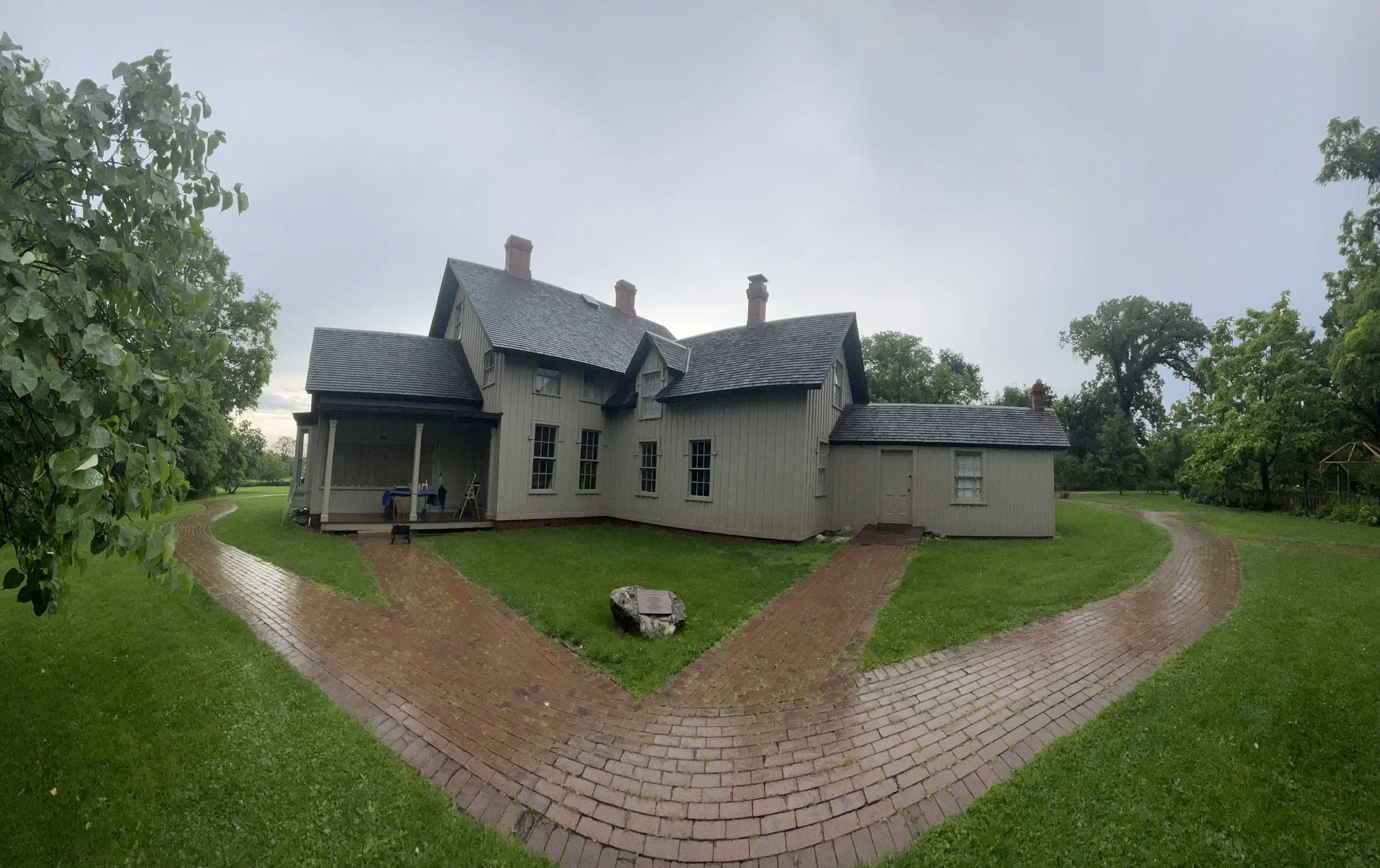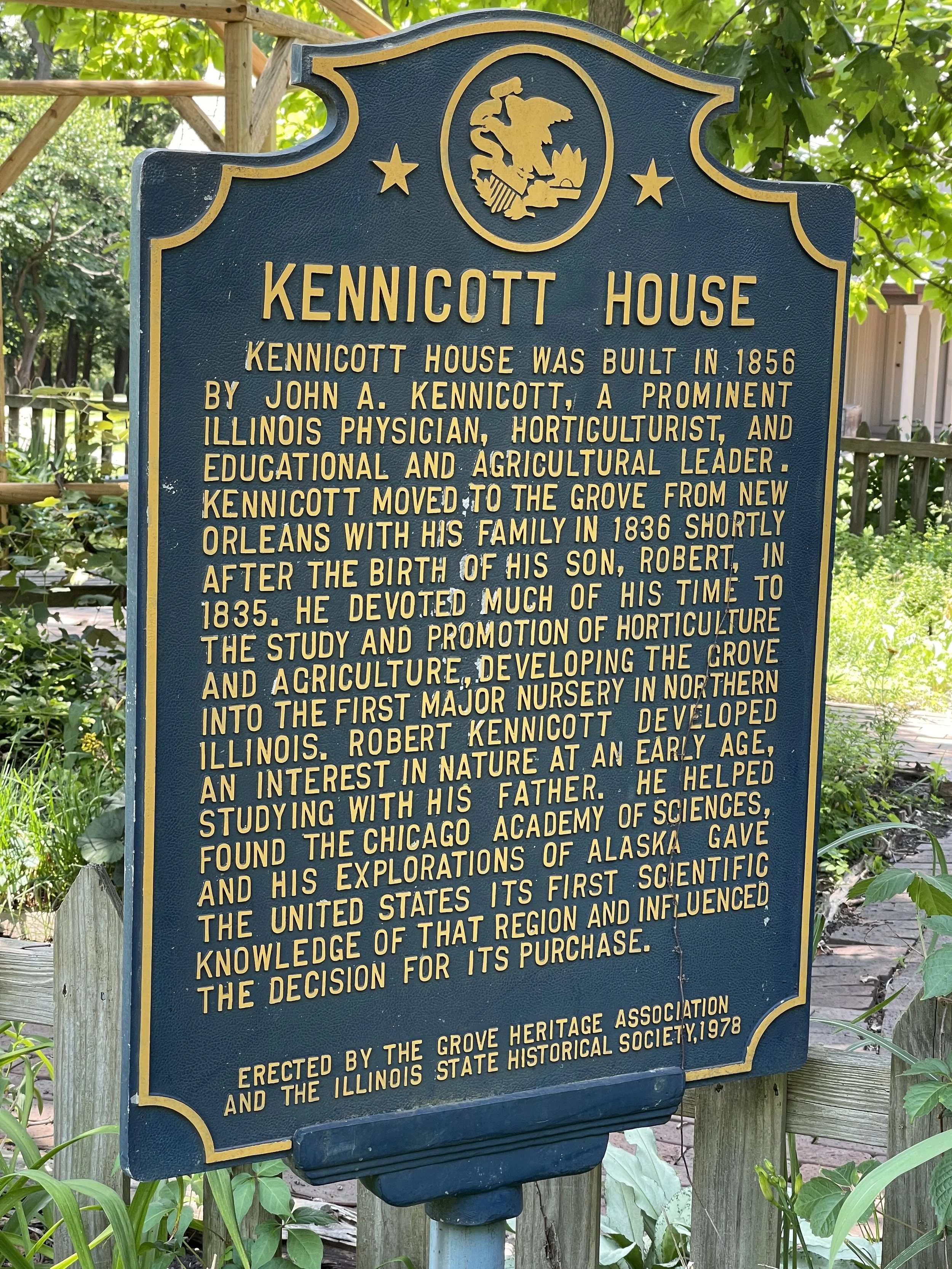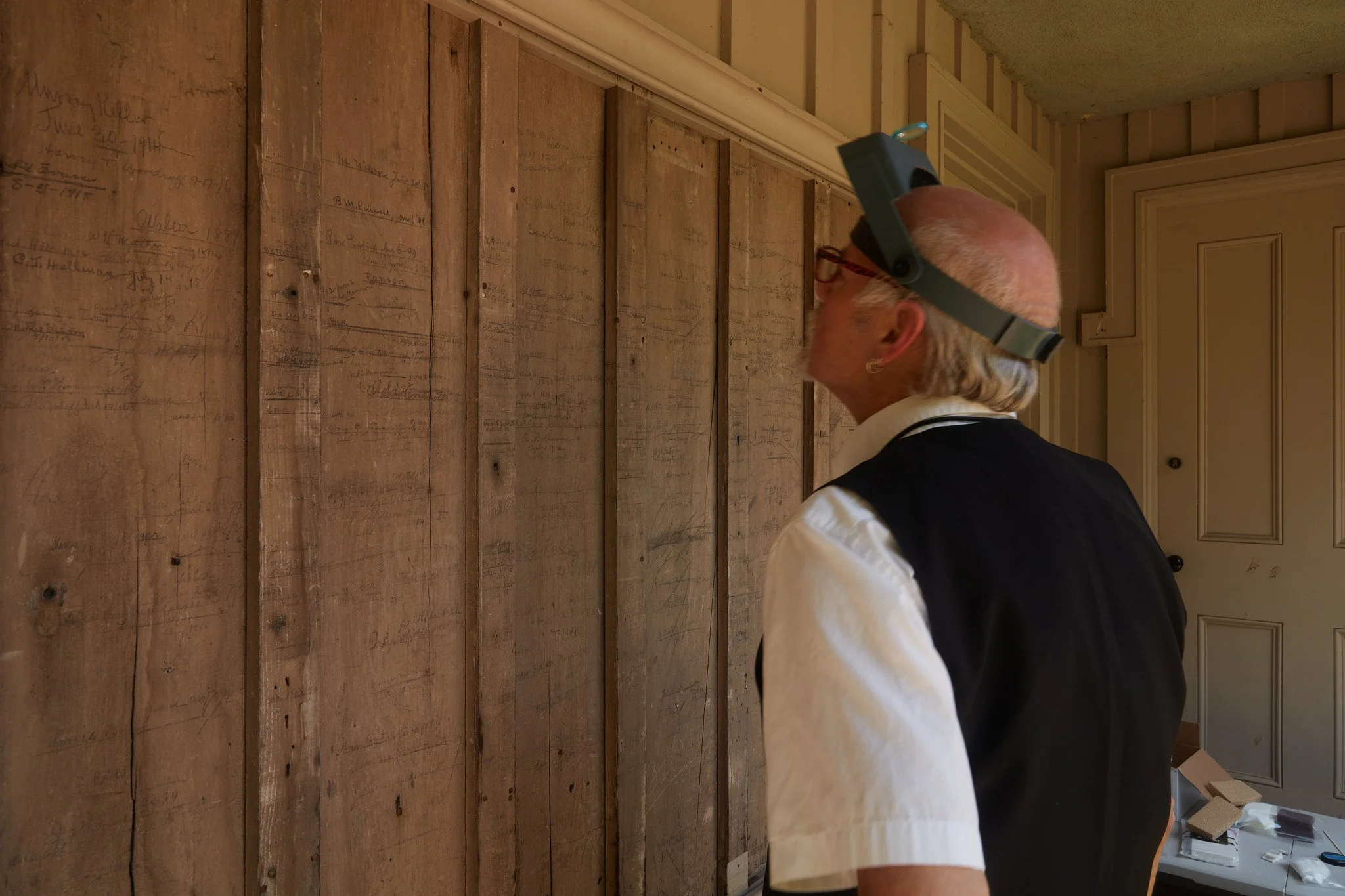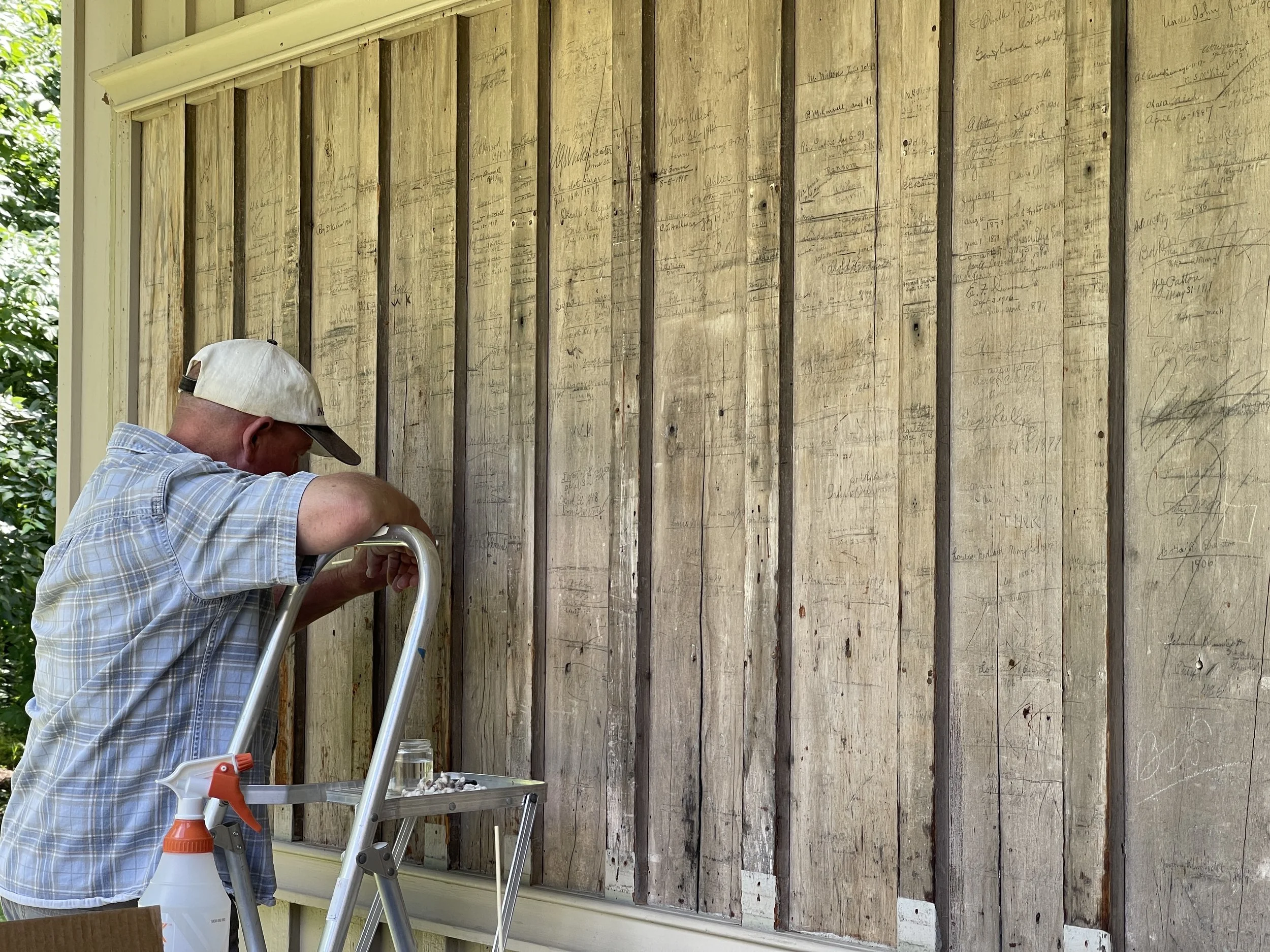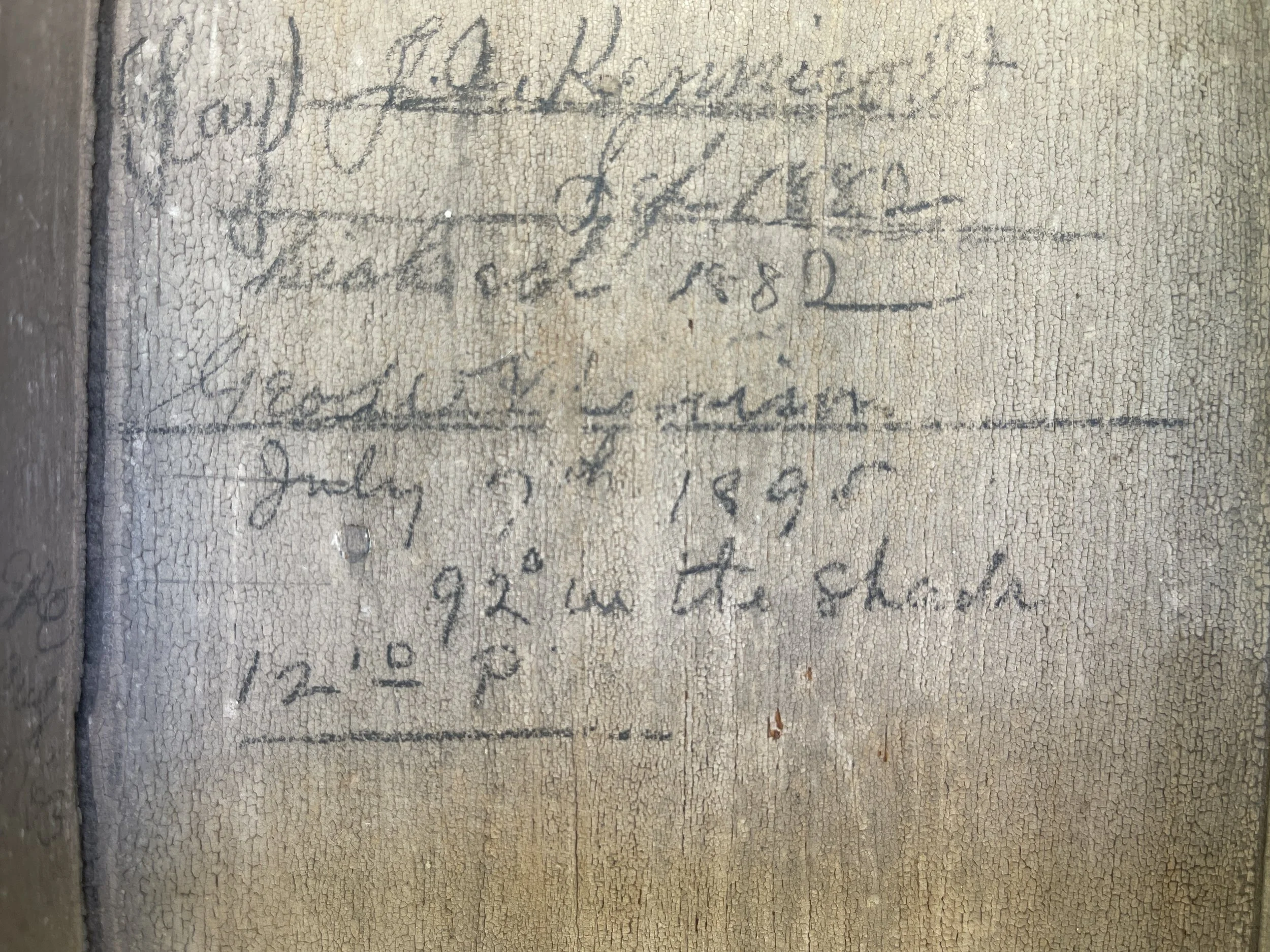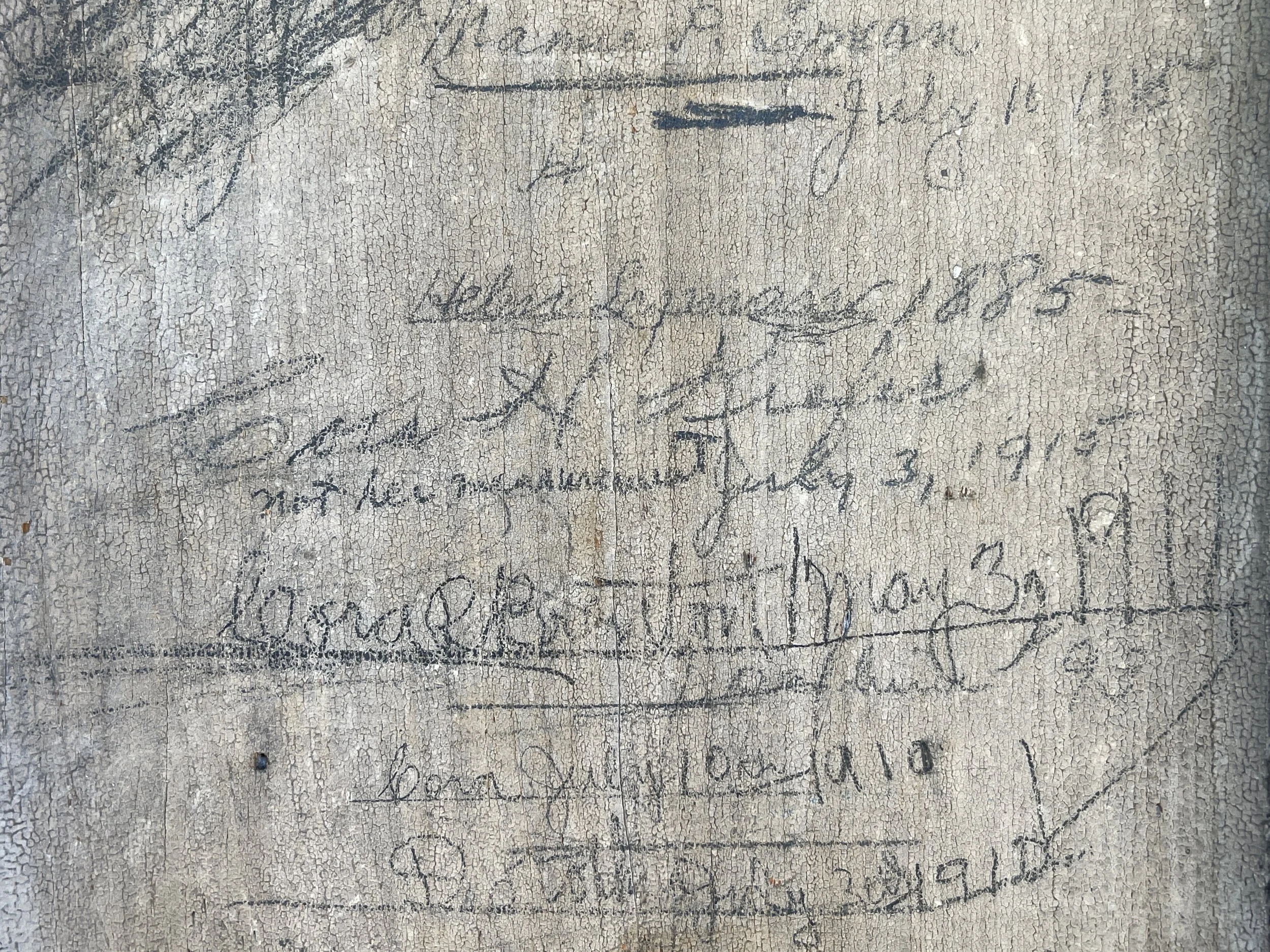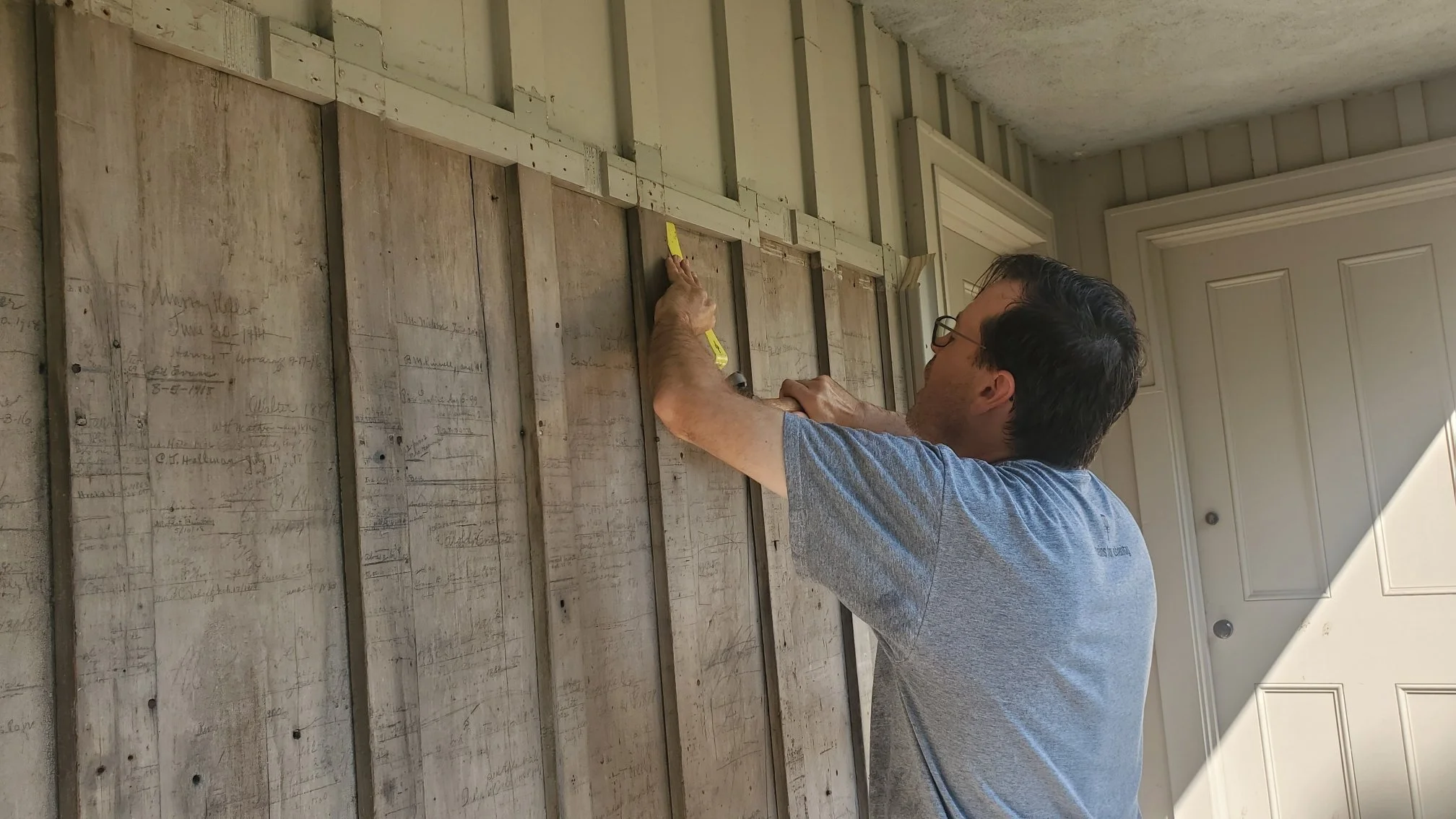Hidden beneath the welcoming back porch of the Kennicott residence at The Grove is a remarkable piece of history – a signature wall bearing the marks of countless Kennicott family members and visitors, with some signatures dating as far back as the 1860s. This unassuming wall, covered in signatures that bear witness to the passage of time, tells the story of a family deeply connected to their home.
Historic photograph of Kennicott House, image courtesy chicagocollections.org
Kennicott House in 1975, shortly after it was donated to the Glenview Park District, image courtesy nps.org
Kennicott House in 2012, image ©Bill Kirchner
The Kennicott family's story at The Grove began in 1836 when Dr. John and Mary Kennicott and their seven children moved into a log cabin on the property. In 1856, Dr. John began constructing the majestic Gothic Revival House that still stands today. Dr. John, known in his time as "The Old Doctor," was a multifaceted pioneer, both a practicing physician and a horticulturist. His contributions extended to his role as the editor of the Prairie Farmer Magazine, Illinois' oldest farm magazine, and a staunch advocate for improved higher education.
The Kennicott House, showing the back porch and signature wall at the left.
Kennicott House historic marker
Kennicott House Signature Wall before treatment
The Kennicott House was restored to its original condition by The Glenview Park District and The Grove Heritage Association in 1983, paying meticulous attention to every historical detail, from the sharply peaked roofline to the period furniture, including over 70 pieces originally belonging to the Kennicott family. The "Signature Wall" serves as a vivid historical record, capturing the signatures of those who visited the home over the years. This wall is a testament to the connection between the Kennicott family, their cherished home, and the surrounding community.
Kennicott House Signature Wall, detail
Over the years, the signature wall faced the elements and suffered from sun exposure and moisture infiltration. The left side of the wall, receiving the brunt of the sun's rays, exhibited fading and losses. Additionally, the acrylic sheet covering the wall had trapped moisture and even housed critters, resulting in scratches and dirt build-up. Watermarks and mold stains further marred the surface. Areas of dry rot locally threatened the structural stability.
Kennicott House Signature Wall under examination by Senior Conservator of Furniture Rob Kleeman
Senior Conservator of Furniture Stephen Ryan during treatment of the Kennicott House Signature Wall
For this treatment, Senior Conservators of Furniture Stephen Ryan and Rob Kleeman, Senior Conservation Framer Scott Dietrich, and Associate Conservation Framer Suz Evans traveled to The Grove in Glenview, IL, about 20 miles northwest of downtown Chicago. First, the existing framing and acrylic sheet was removed to allow access to the signatures. One of the most critical aspects of the conservation process involved the meticulous cleaning of the grime that had accumulated over the years. Stephen and Rob employed a multi-step approach to ensure the preservation of the wall's historical integrity. The initial step included brushing and dry cleaning the surface using soot sponges and artist erasers of various makeups. This gentle process effectively removed the surface contaminants without compromising the signatures.
Continued cleaning involved using an alcohol-based solution and swabs, which proved highly effective and least interactive with the paint layer and the signatures. Close examination revealed that multiple mediums were used over time, with older signatures primarily being ink-based - either iron gall or carbon black - and later signatures using lead or graphite. The conservators took great care to select suitable cleaning agents for each medium. Stubborn grime was treated with an ammonium citrate solution and cleared with distilled water, ensuring that even the most persistent stains were addressed. The surface was also cleaned within the margins of signatures in some localized areas with a gum eraser.
Kennicott House Signature Wall, detail with the day’s weather: July 7th (or 9th) 1895, 92° in the shade, 12:10 pm
Kennicott House Signature Wall, detail with an interesting note: Cora H Kiefer, not her engagement, July, 3 1915
The team also employed a consolidant to stabilize severely damaged wood structure and areas of dry rot. Tide lines on the southern end of the wall, located in lightly damaged areas, were treated to minimize contrast with unaffected surfaces. The cleaning process was followed by careful inpainting and blending areas of severely deteriorated surface on the southern end of the wall using conservation pigments and dry pastels, locally sealed with fixative. Elizabeth Kopp, archivist for The Grove, shared how much of a difference the cleaning made to the legibility of the signatures, “The work was incredible. We'll now be able to take the names and try to figure out who they are, which we have wanted to do for quite a long time.”
The next essential aspect of the conservation was the design of a new frame. The original frame functioned as a heat and moisture chamber, damaging the wall with humidity build-up and heat retention. The new frame was designed to look like the previous frame but with an innovative approach that allows for better temperature control and prevents the build-up of humidity and heat, which had previously damaged the wall.
Sketch of initially proposed new framing
Sketch of initially proposed new framing
Sketch of initially proposed new framing
Suz shared, "Between the batons, openings at the top and bottom of the frame create airflow. The previous framer had blocked those spaces in with cedar. We carefully removed the blocks, carved a dado in them, and then reinstalled them. As the sun heats the wall, the airflow should be able to cool it down as temperatures fall, rather than retaining the heat." The design includes a removable rail, making it easier to slide out the acrylic sheet for cleaning and maintenance. Furthermore, to mitigate the effects of sunlight, the new acrylic is UV filtering glazing that will help deflect some of the sun's harmful rays.
Senior Conservation Framer Scott Dietrich works on the new framing solution for the Signature Wall
The conservation of The Kennicott Family's Signature Wall at The Grove represents a harmonious blend of preservation, innovation, and care. By safeguarding this historical treasure, the conservation team has ensured that the memories and legacies of the Kennicott family and their visitors continue to thrive, connecting generations past and present.
Kennicott House Signature Wall after treatment
Kennicott House Signature Wall after treatment
In the words of Suz Evans, "Working with a historic house presents so many variables that you cannot account for before you are on-site. We made use of the woodshop and got the help of the excellent Grove staff to create custom shims for the rail installation. Overall, there was a lot of troubleshooting, but we made it happen." The Signature Wall now stands as a testament to the enduring spirit of The Grove and the Kennicott family's rich history, ready to inspire generations to come. Family member Katie Kennicott shared, "It’s just a very special place... and we can’t think of any way to thank all those people who put their hearts and souls into that."
Members of the Kennicott family signing the signature wall, 2023.




